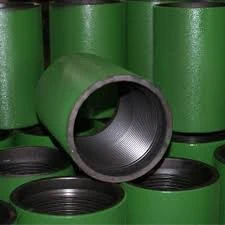- Afrikaans
- Albanian
- Amharic
- Arabic
- Armenian
- Azerbaijani
- Basque
- Belarusian
- Bengali
- Bosnian
- Bulgarian
- Catalan
- Cebuano
- Corsican
- Croatian
- Czech
- Danish
- Dutch
- English
- Esperanto
- Estonian
- Finnish
- French
- Frisian
- Galician
- Georgian
- German
- Greek
- Gujarati
- Haitian Creole
- hausa
- hawaiian
- Hebrew
- Hindi
- Miao
- Hungarian
- Icelandic
- igbo
- Indonesian
- irish
- Italian
- Japanese
- Javanese
- Kannada
- kazakh
- Khmer
- Rwandese
- Korean
- Kurdish
- Kyrgyz
- Lao
- Latin
- Latvian
- Lithuanian
- Luxembourgish
- Macedonian
- Malgashi
- Malay
- Malayalam
- Maltese
- Maori
- Marathi
- Mongolian
- Myanmar
- Nepali
- Norwegian
- Norwegian
- Occitan
- Pashto
- Persian
- Polish
- Portuguese
- Punjabi
- Romanian
- Russian
- Samoan
- Scottish Gaelic
- Serbian
- Sesotho
- Shona
- Sindhi
- Sinhala
- Slovak
- Slovenian
- Somali
- Spanish
- Sundanese
- Swahili
- Swedish
- Tagalog
- Tajik
- Tamil
- Tatar
- Telugu
- Thai
- Turkish
- Turkmen
- Ukrainian
- Urdu
- Uighur
- Uzbek
- Vietnamese
- Welsh
- Bantu
- Yiddish
- Yoruba
- Zulu
api tubing couplings
Understanding API Tubing Couplings Essential Components in Oil and Gas Operations
In the oil and gas industry, the efficient and safe extraction of resources hinges on a wide array of equipment and components. One such critical element is the tubing coupling, which plays a vital role in the overall performance of well operations. In this article, we will delve into API (American Petroleum Institute) tubing couplings, exploring their significance, types, standards, and installation practices.
What Are API Tubing Couplings?
API tubing couplings are specialized fittings designed to connect sections of tubing within a wellbore. These couplings serve as a crucial interface for two or more lengths of tubing, ensuring a seamless flow of oil, gas, or other fluids from deep within the ground to the surface. The design and construction of these couplings are governed by API standards to ensure durability, reliability, and safety, which are paramount in the high-pressure environments typical of oil and gas operations.
Importance of API Standards
API standards provide guidelines and specifications that manufacturers must adhere to when producing tubing couplings. This standardization ensures that couplings are compatible with various tubing grades and types, facilitating a smooth integration process during well construction, maintenance, and repair. API's specifications, such as API 5CT, outline the required material properties, dimensions, and quality controls that ensure the integrity of couplings under extreme conditions.
Types of Tubing Couplings
There are several types of tubing couplings used in the industry, each suited to specific applications and operational requirements
1. Threaded Couplings These are the most common types and feature external threads on both ends. They allow for easy installation and disassembly, making them ideal for temporary operations or where regular maintenance is required.
2. Screwed Couplings Similar to threaded couplings, screwed couplings offer robust connections due to the precision of the screw mechanism. They reduce the risk of leakage and enhance the overall integrity of the tubing assembly.
3. Welded Couplings In circumstances where a more permanent connection is preferred, welded couplings are employed. These couplings are fused to the tubing, providing a high-strength bond that can withstand significant stress and temperature variations.
api tubing couplings

4. Non-standard Couplings In some cases, custom couplings may be necessary for specialized operations. These couplings may incorporate unique designs or materials to meet specific performance requirements.
Material and Design Considerations
The material used in manufacturing API tubing couplings is crucial for their efficiency and longevity. High-strength steel alloys are often utilized to ensure they can withstand the stresses of high-pressure environments while also resisting corrosive elements found in certain oil and gas applications. Furthermore, the design of the coupling must account for various factors, including thermal expansion, pressure fluctuations, and mechanical loads, to ensure a reliable connection.
Installation Practices
Proper installation of API tubing couplings is essential to ensure their effectiveness and the overall safety of the operation. Key practices include
1. Inspection Before installation, it’s vital to inspect both the tubing and the couplings for any signs of damage, corrosion, or wear. This ensures that only high-quality components are used.
2. Lubrication Adequate lubrication of threads is essential during installation to prevent galling and ensure a smooth connection.
3. Torque Specifications Following manufacturer guidelines on torque settings during installation is critical to avoid over-tightening, which can lead to failures or leaks.
4. Testing Post-installation pressure testing should be conducted to confirm that the connections are secure and leak-free, thereby ensuring operational safety.
Conclusion
API tubing couplings are indispensable components in the oil and gas industry, contributing to the efficiency and effectiveness of resource extraction. By adhering to strict API standards and employing best practices in selection, installation, and maintenance, operators can optimize the performance of their wells while ensuring safety and reliability in their operations. As technology continues to advance, the design and manufacturing of tubing couplings will also evolve, further enhancing their role in the ever-demanding energy sector.
-
Tubing Pup Joints: Essential Components for Oil and Gas OperationsNewsJul.10,2025
-
Pup Joints: Essential Components for Reliable Drilling OperationsNewsJul.10,2025
-
Pipe Couplings: Connecting Your World EfficientlyNewsJul.10,2025
-
Mastering Oilfield Operations with Quality Tubing and CasingNewsJul.10,2025
-
High-Quality Casing Couplings for Every NeedNewsJul.10,2025
-
Boost Your Drilling Efficiency with Premium Crossover Tools & Seating NipplesNewsJul.10,2025







